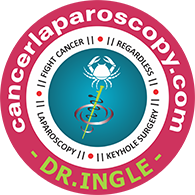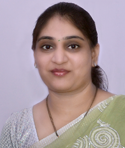Breast cancer
Definition
Breast cancer is a cancer that starts in the tissues of the breast.
Breast cancer is a cancer that starts in the tissues of the breast.
- Age– increasing age increases the risk.
- Family history of breast cancer -- higher risk for breast cancer if you have a close relative with history of breast, uterine, ovarian, colon cancer.
- Genes -- The most common gene defects are found in the BRCA1 and BRCA2 genes. Women with one of these defects have up to an 80% chance of getting breast cancer sometime during their life.
- Menstrual cycle -- Women who get their periods early (before age 12) or went through menopause late (after age 55) have an increased risk for breast cancer.
Other risk factors include:
- Alcohol use –
- Childbirth -- Women who have never had children or who had them only after age 30 have an increased risk for breast cancer. Being pregnant more than once or becoming pregnant at an early age reduces your risk of breast cancer.
- Hormone replacement therapy (HRT) -- You have a higher risk for breast cancer if you have received hormone replacement therapy for several years or more
- Obesity -- this correlation is controversial.
- Radiation -- If you received radiation therapy as a child or young adult to treat cancer of the chest area, you have a significantly higher risk for developing breast cancer.
Symptoms
- Breast lump or lump in the armpit that is hard and usually does not hurt.
- Change in the size, shape, or feel of the breast or nipple -- for example, you may have redness, dimpling, or puckering that looks like the skin of an orange.
- Fluid coming from the nipple -- may be bloody, clear-to-yellow, or green, and look like pus
- Men get breast cancer, too. Symptoms include breast lump and breast pain and tenderness.
- Bone pain
- Breast pain or discomfort
- Skin ulcers
- Swelling of one arm on the side of the breast lump
- Weight loss
Diagnosis
- Physical examination
- Mammography to help identify the breast lump
- Breast ultrasound to show whether the lump is solid or cystic.
- Breast biopsy, needle aspiration, or breast lump removal to remove all or part of the breast
- CT scan
- PET scan
Treatments
- Surgery to remove cancerous tissue -- a lumpectomy removes the breast lump; mastectomy removes all of the breast and lymph nodes in the axilla.
- Chemotherapy medicines used to kill cancer cells; it may be used preoperatively also to shrink the size of tumor or post operatively as adjuvant treatment.
- Radiation therapy to destroy cancerous tissue depending on the histopathology report, not always required in case of mastectomy.
- Hormonal therapy to block certain hormones that fuel cancer growth
- Targeted therapy to interfere with cancer cell grow and function
When to Contact us
- You have a breast or armpit lump
- You are a woman age 40 or older and have not had a mammogram in the last year
- You are a woman age 35 or older and have a mother or sister with breast cancer, or have already had cancer of the breast, uterus, ovary, or colon.
Prevention
- Breast cancer is more easily treated and often curable if it is found early.
- Early detection involves:
- Breast self-exams (BSE)
- Clinical breast exams by an oncosurgeon.
- Screening mammography
- Most experts recommend that women age 20 and older examine their breasts once a month during the week following the menstrual period.Women between the ages 20 and 39 should have a doctor examine their breasts at least once every 3 years.
- After age 40:
- Women 40 and older should have a mammogram every 1 - 2 years, depending on their risk factors.
- Women 40 and older should have a complete breast exam by an oncosureon every year.
Prevention and Lifestyle Factors
- At a fixed date of every month breast self examination should be done.
- Stand in front of a mirror. Breasts should be basically the same size (one may be slightly larger than the other). Check for changes or redness in the nipple area. Look for changes in the appearance of the skin. With hands on the hips, push the pelvis forward and pull the shoulders back and observe the breasts for irregularities. Repeat the observation with hands behind the head. Move each arm and shoulder forward.
- Lie down on the back with a rolled towel under one shoulder. Apply lotion or bath oil over the breast area.The finger action should be as follows: Using the 2nd, 3rd, and 4th finger pads (not tips) held together, make dime-sized circles. Press lightly first to feel the breast area, and then press harder using a circular motion.Using this motion, start from the collarbone and move downward to underneath the breast. Shift the fingers slightly over, slightly overlapping the previously checked region, and work upward back to the collarbone. Repeat this up-and-down examination until the entire breast area has been examined. Be sure to cover the entire area from the collarbone to the bottom of the breast area and from the middle of the chest to the armpits. Move the towel under the other shoulder and repeat the procedure.Examine the nipple area, by gently lifting and squeezing it and checking for discharge.
- Repeat step 3 in an upright position. (The shower is the best place for this, using plenty of soap.)
Post-Treatment Care
- Visit your doctor every 3 - 6 months for the first 3 years after your first cancer treatment, every 6 - 12 months during the fourth and fifth year, and once a year thereafter.
- Have a mammogram 1 year after the mammogram that diagnosed your cancer
- Perform a breast self-exam every month








